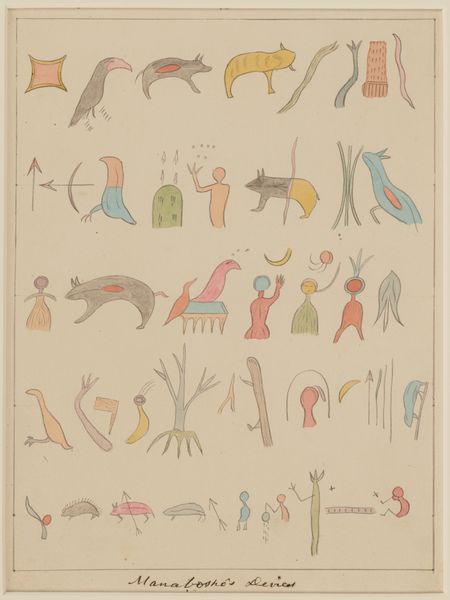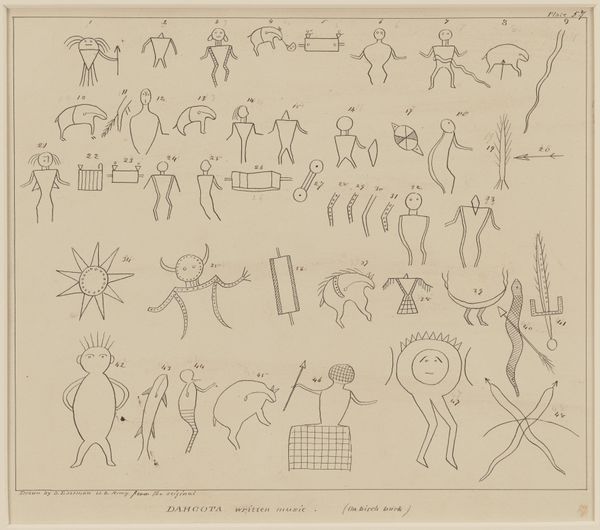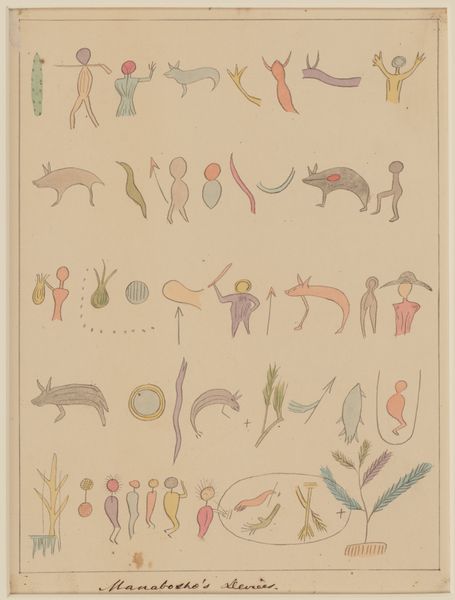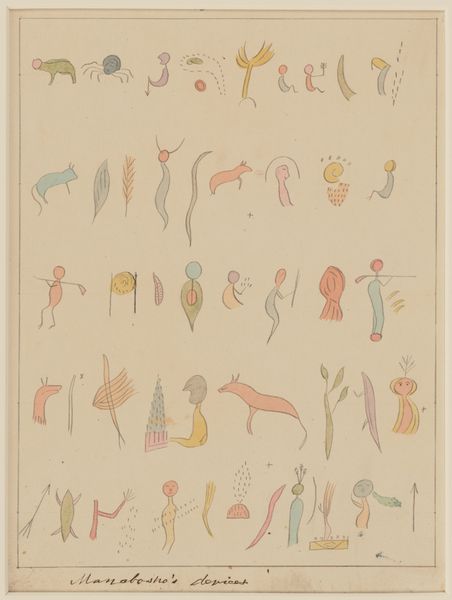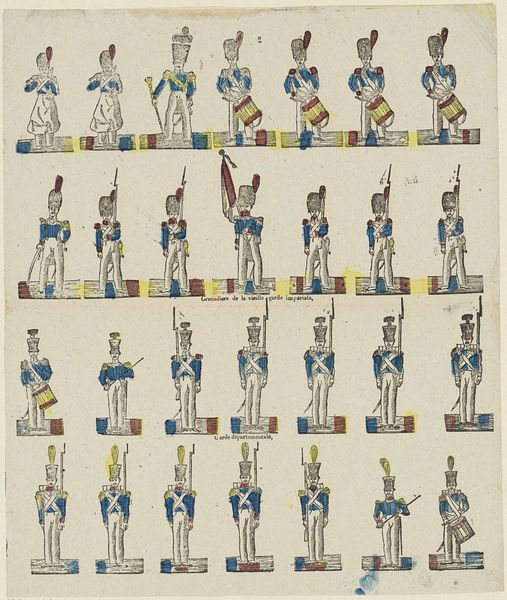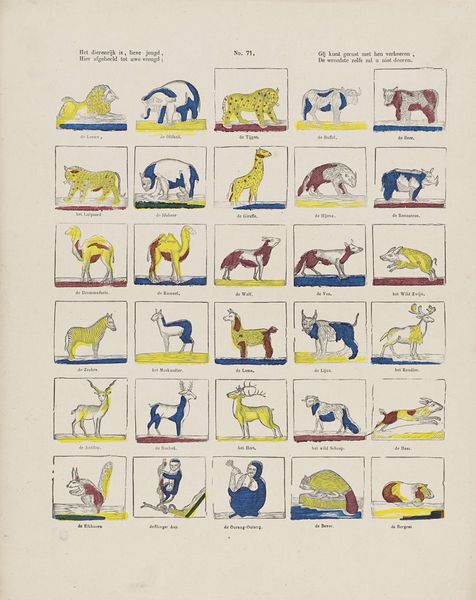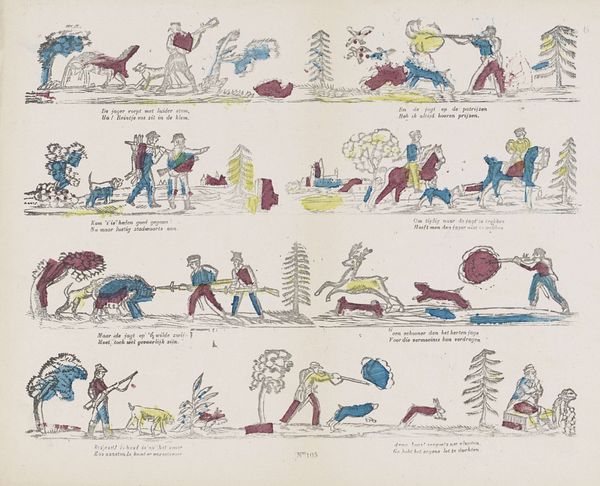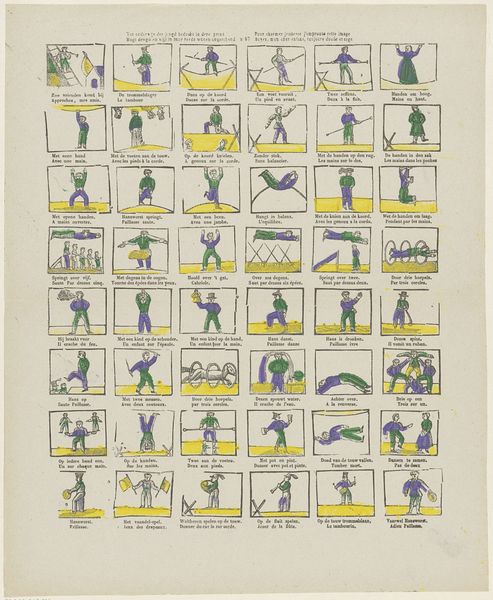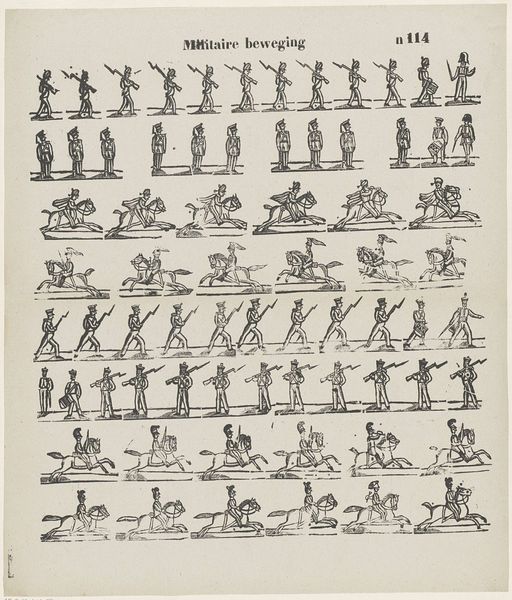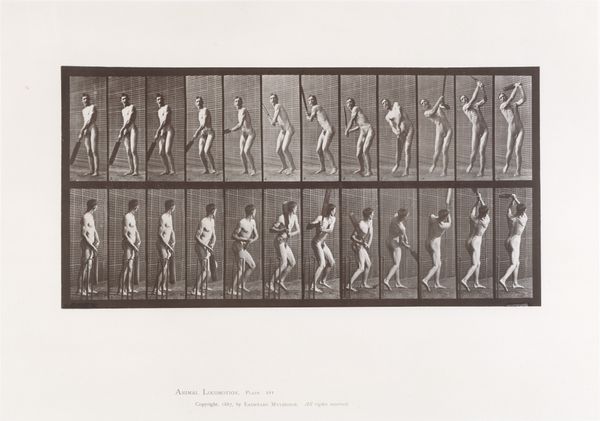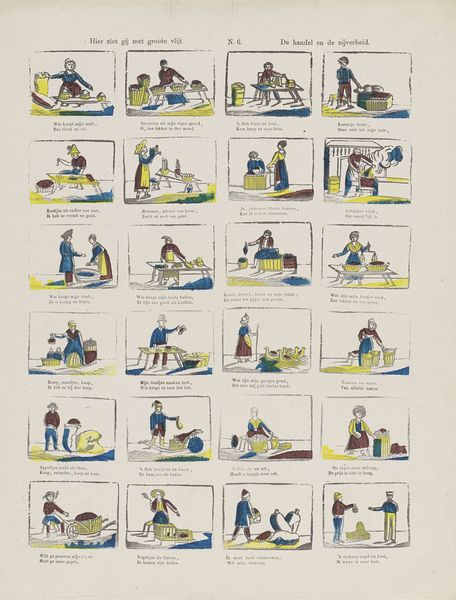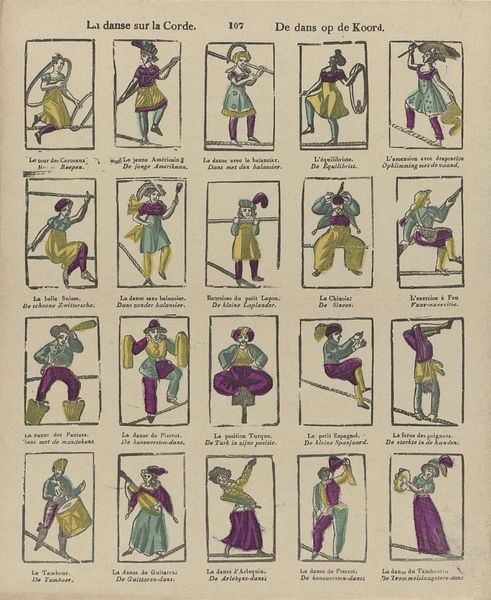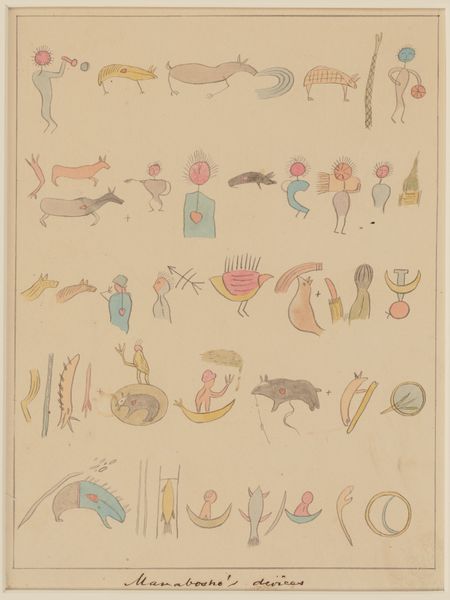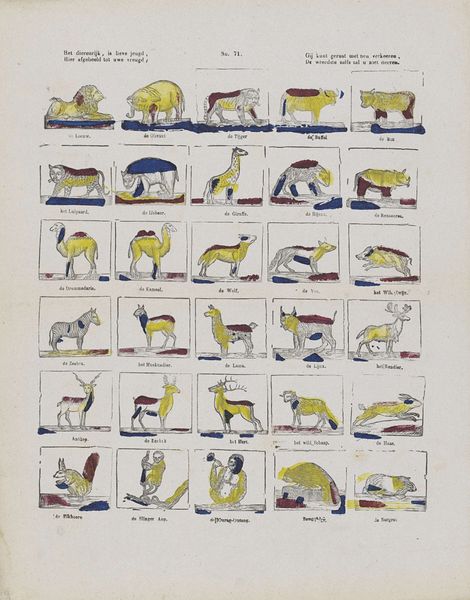
lithograph, print
#
narrative-art
#
lithograph
# print
#
figuration
#
genre-painting
#
academic-art
#
watercolor
Dimensions: height 347 mm, width 442 mm
Copyright: Rijks Museum: Open Domain
Curator: "Gymnastiek (2)," a lithograph by Jan de Haan from the late 19th century. It feels like a snapshot of a bygone era. What are your initial thoughts on it? Editor: It definitely feels…regimented. Seeing all those young men engaged in these exercises, almost like a pattern, it makes me wonder about the role of physical education and societal expectations back then. What do you see in this piece? Curator: The composition indeed hints at the normalization of specific forms of masculinity and national identity formation. Gymnastics, during this period, became closely tied to concepts of physical and moral discipline, contributing to the creation of ideal citizens, fit for military service and aligned with national goals. Consider the repetitive nature of the poses – does it strike you as celebratory of individual freedom, or suggestive of enforced conformity? Editor: I hadn't thought of it in terms of conformity. But now that you mention it, there’s something a little unsettling about it. Were there alternative forms of recreation or resistance to these prescribed ideals of masculinity? Curator: Absolutely. While "Gymnastiek" presents a specific vision, contemporary social movements and evolving class structures promoted varying counter-narratives about bodies, leisure and identity. Think about the rise of different sports among the working class, for instance. Editor: That context really shifts my understanding of the print. It is no longer just a nostalgic look at old-time gymnastics; instead, I'm also compelled to interpret this as documentation and subtle enforcement of societal norms of gender and nationalism. Curator: Precisely! It's important to ask what ideologies are being promoted and who benefits. Every visual representation exists within power dynamics and promotes certain narratives. Editor: I’ll definitely keep that in mind going forward! I thought I would simply describe the piece, but it represents so much more now. Curator: That’s the beauty of engaging with art through a critical lens—seeing how the personal connects with the political, even in seemingly simple images.
Comments
No comments
Be the first to comment and join the conversation on the ultimate creative platform.
